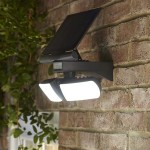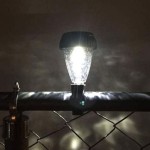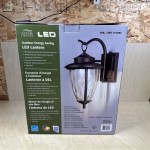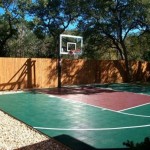How to Get Mould Off Outdoor Cushions
Outdoor cushions, while designed for open-air use, are inevitably susceptible to the growth of mould and mildew. These fungi thrive in damp, shaded environments and feed on organic materials, including the fabrics and fillings commonly used in outdoor cushions. Identifying and addressing mould growth promptly is essential to protect the cushions, maintain outdoor aesthetics, and prevent potential health issues associated with mould spores.
This article details effective methods for removing mould from outdoor cushions, covering preventative measures to minimize future growth and providing guidance on when professional assistance may be necessary. Understanding the causes of mould growth and implementing appropriate cleaning and maintenance practices are crucial for prolonging the life and usability of outdoor cushions.
Understanding Mould and Its Growth on Outdoor Cushions
Mould is a type of fungus that reproduces by releasing tiny spores into the air. These spores are ubiquitous, meaning they are present virtually everywhere. When mould spores land on a surface that provides moisture, warmth, and a food source, they can begin to grow and form colonies. Outdoor cushions, especially those left exposed to the elements, often provide the ideal conditions for mould proliferation.
The primary factors contributing to mould growth on outdoor cushions include:
- Moisture: Rain, humidity, spills, and condensation all contribute to moisture accumulation in cushion fabrics and fillings.
- Warmth: Warm temperatures promote fungal growth. Covered or shaded areas where air circulation is limited can trap heat and create a favorable environment for mould.
- Organic Matter: Fabrics like cotton, linen, and even some synthetic materials contain organic compounds that serve as a food source for mould. Dirt, pollen, and other organic debris that accumulate on cushions further contribute to this food source.
- Poor Ventilation: Stacking cushions or covering them without adequate ventilation traps moisture and creates a humid environment conducive to mould growth.
The first signs of mould growth often appear as small, discolored spots, typically black, green, or white. These spots may have a musty odor. If left untreated, mould can spread rapidly, causing significant damage to the cushion fabric and potentially penetrating the filling. In severe cases, mould growth can compromise the structural integrity of the cushion and render it unusable.
Effective Methods for Removing Mould from Outdoor Cushions
Several methods can be employed to remove mould from outdoor cushions, ranging from simple DIY solutions to more intensive cleaning techniques. The choice of method will depend on the severity of the mould growth, the type of fabric, and the overall condition of the cushion.
1. Initial Assessment and Preparation: Before attempting any cleaning method, it is crucial to assess the extent of the mould growth and identify the type of fabric. Always test any cleaning solution on a small, inconspicuous area of the cushion to ensure it does not cause discoloration or damage. Gather necessary supplies, including a stiff brush, a vacuum cleaner with a hose attachment, cleaning solutions (see below), gloves, and a face mask to protect against mould spores.
2. Dry Removal: Begin by using a stiff brush to gently scrub away any loose mould spores and debris from the surface of the cushion. Avoid applying excessive pressure, as this can embed the spores deeper into the fabric. Vacuum the entire cushion, using the hose attachment to reach into seams and crevices where mould may be hidden. Dispose of the vacuum cleaner bag immediately to prevent the spread of mould spores.
3. Cleaning Solutions: Several effective cleaning solutions can be used to remove mould from outdoor cushions. It's important to choose a solution appropriate for the fabric type to avoid damage.
- Mild Soap and Water: For lightly soiled cushions with minimal mould growth, a solution of mild dish soap and warm water can be effective. Mix a small amount of soap with water and apply it to the affected areas using a sponge or cloth. Gently scrub the mould stains and then rinse thoroughly with clean water.
- Vinegar Solution: White vinegar is a natural disinfectant and effective mould killer. Mix equal parts white vinegar and water in a spray bottle. Spray the solution onto the affected areas, allowing it to sit for 15-20 minutes to penetrate the mould. Scrub the stains with a brush and then rinse thoroughly with clean water. The vinegar smell will dissipate as the cushion dries.
- Bleach Solution: Bleach is a powerful mould killer, but it should be used with caution, as it can damage or discolor certain fabrics. Only use bleach on colorfast fabrics that can withstand its harshness. Mix one part bleach with ten parts water. Apply the solution to the affected areas using a sponge or cloth, taking care to avoid splashing. Allow it to sit for 10-15 minutes, then rinse thoroughly with clean water. Always wear gloves and eye protection when working with bleach. Never mix bleach with ammonia, as this can create toxic fumes. Testing in an inconspicuous area is extremely important before applying it to the entire cushion.
- Commercial Mould and Mildew Removers: Several commercial mould and mildew removers are available specifically for outdoor fabrics. Follow the manufacturer's instructions carefully, and always test the product on a small, inconspicuous area before applying it to the entire cushion.
4. Deep Cleaning and Rinsing: After applying the chosen cleaning solution and scrubbing the mould stains, thoroughly rinse the cushions with clean water. Use a garden hose or a bucket of water to ensure all traces of the cleaning solution are removed. Residual cleaning solutions can attract dirt and promote future mould growth.
5. Drying: Proper drying is essential to prevent the return of mould. Air-dry the cushions in direct sunlight, if possible. Sunlight acts as a natural disinfectant and helps to kill any remaining mould spores. Ensure the cushions are completely dry before storing them or placing them back on outdoor furniture. If air-drying is not possible, use a fan to circulate air and speed up the drying process. Avoid using a dryer, as the heat can damage the fabric and cause shrinkage.
Preventative Measures to Minimize Mould Growth
Preventing mould growth is always preferable to dealing with an existing infestation. Implementing proactive measures can significantly reduce the risk of mould on outdoor cushions.
1. Regular Cleaning: Regularly clean outdoor cushions to remove dirt, pollen, and other organic debris that serve as a food source for mould. Vacuum cushions weekly and wipe them down with a damp cloth or sponge as needed to remove spills and stains promptly.
2. Proper Storage: When outdoor furniture is not in use, store cushions in a dry, well-ventilated area, such as a shed, garage, or storage container. Ensure the cushions are completely dry before storing them. Avoid stacking cushions tightly together, as this can trap moisture and promote mould growth. Use breathable storage bags or covers to protect cushions from dust and moisture while allowing air to circulate.
3. Waterproofing and Water Repellency: Consider applying a waterproofing or water-repellent spray to outdoor cushions, especially those made from absorbent fabrics like cotton. These sprays create a barrier that prevents water from penetrating the fabric, reducing the risk of moisture accumulation and mould growth. Reapply the spray periodically according to the manufacturer's instructions.
4. Ventilation: Ensure adequate ventilation around outdoor cushions. Avoid placing them in damp, shaded areas where air circulation is limited. Regularly fluff cushions to improve air circulation and prevent moisture from becoming trapped in the filling.
5. Addressing Moisture Sources: Identify and address any sources of moisture that may contribute to mould growth. Repair leaky faucets or gutters, and ensure proper drainage in areas where outdoor furniture is placed. Wipe up spills immediately and allow cushions to dry thoroughly after rain or heavy dew.
When to Seek Professional Assistance
While DIY methods can be effective for removing mild to moderate mould growth, there are situations where professional cleaning services may be necessary. Consider seeking professional assistance if:
- Extensive Mould Growth: If mould has spread throughout the cushion, penetrating deep into the filling, professional cleaning may be the only way to effectively remove it.
- Persistent Mould Odor: A persistent musty odor even after cleaning suggests that mould spores are still present and potentially embedded deep within the cushion. Professionals have access to specialized equipment and cleaning solutions that can eliminate these persistent odors.
- Delicate Fabrics: If the cushions are made from delicate fabrics that are easily damaged, professional cleaners have the expertise and equipment to clean them safely and effectively.
- Health Concerns: If anyone in the household has allergies, asthma, or other respiratory conditions, professional mould removal is recommended to minimize exposure to mould spores.
Professional cleaning services typically use specialized equipment, such as steam cleaners and ozone generators, to kill mould spores and remove stains. They also have access to stronger cleaning solutions that are not available to the general public. Before hiring a professional cleaning service, research their experience and qualifications, and ask for references. Ensure they have experience cleaning outdoor cushions and are familiar with the specific types of fabrics used in the cushions.
By understanding the causes of mould growth, implementing effective cleaning methods, and taking preventative measures, prolonged mould growth can be avoided. This will extend the life of outdoor cushions, maintain the aesthetic appeal of outdoor spaces, and protect the health and well-being of individuals using the area.

How To Remove Mildew Stains From Outdoor Cushions

How To Remove Mildew Stains From Outdoor Cushions

Cleaning Mrs Hinch Fans Share How To Remove Mould From Outdoor Cushion Covers Express Co

How To Remove Mildew Stains From Outdoor Cushions

How To Remove Mildew From Outdoor Furniture Cushions

How To Remove Mildew Stains From Outdoor Cushions

5 Ways To Remove Mold Mildew From Outdoor Cushions Prudent Reviews

How To Rid Outdoor Cushions Of Mildew

Wet Forget Outdoor Mildew Remover For Patio Furniture Life S Dirty Clean Easy

7 Easy Ways To Clean Mold Off Patio Cushions And How Prevent It Www Homelifeleisure Com
Related Posts







